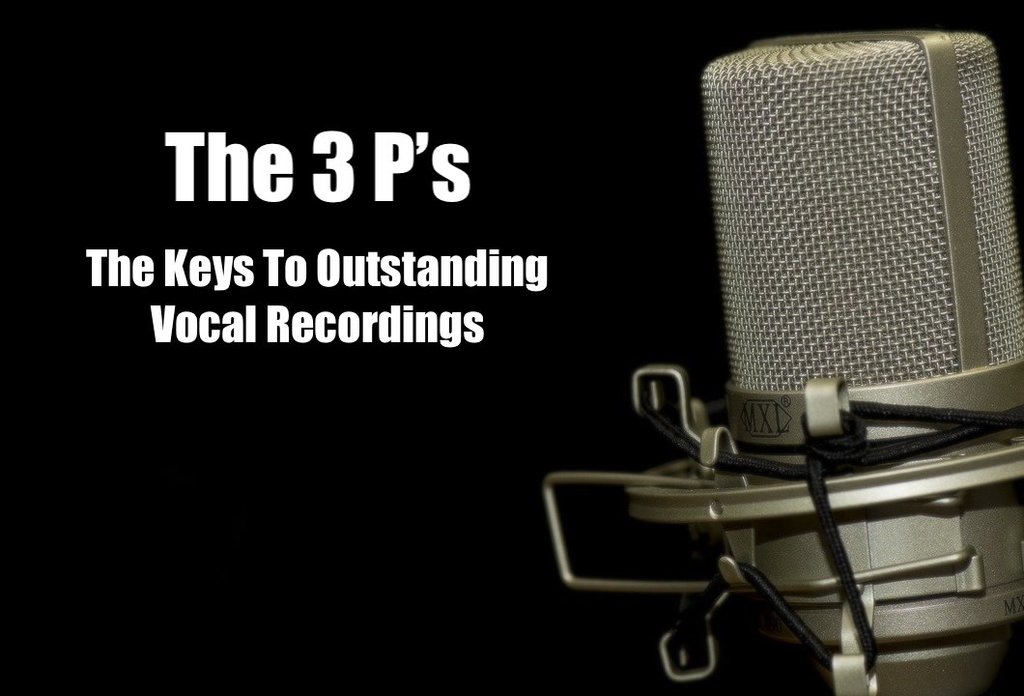- in Production by Bobby Owsinski
The 3 P’s – The Keys To An Outstanding Vocal Recording

My good buddy and fantastic engineer/producer Ed Seay has a saying that I’ve used in a number of books about the 3 P’s or “Pitch, Passion and Pocket.” That refers to the 3 things that every great vocal must have, although you can apply it to other musical performances as well. Ed is not only one of the greatest mixers anywhere, but he’s a great teacher and mentor too, having brought along production luminaries such as Dave Pensado and Brendon O’Brian, not to mentioned having worked on tons of hits by Alabama, Martina McBride, Dolly Parton, and many more, so he knows what he’s talking about.
Here’s an excerpt that explains Ed’s “Pitch, Passion and Pocket” concept from The Music Producer’s Handbook, although you’ll find similar sections in The Mixing Engineer’s Handbook (Ed’s interviewed in it) as well.
In the studio, the 3 P’s are what a producer lives by. You’ve got to have all three to have a dynamite vocal. And while Pitch and Pocket problems can be fixed by studio trickery, if you don’t have Passion, you don’t have a vocal. On stage, the three P’s apply maybe even more so, since you don’t have any of the advantages of the studio. Let’s take a look inside the three P’s.
Pitch
Staying in pitch means singing in tune. And not just some of the notes – every single note! They’re all equally important!! Pitch also means following the melody reliably. There’s a trend these days to skat sing around a melody, and while that might be desirable in some genres, it doesn’t work in any genre if you do it all the time. Skating might show off your technique and ability but a song has a melody for a reason. That’s what people know, that’s what they can sing to themselves, and usually that’s what they want to hear.
The Pocket means singing in time and in the “groove” (the rhythm) of the song. You can be in pitch, but if you’re wavering ahead or behind the beat it won’t feel right. All of the things that help instrumentalists that are advocated elsewhere in the book apply to vocals as well. Concentrate on the downbeat (on beat 1) to get your entrances. Concentrate on the snare drum (on 2 and 4) to stay in the pocket.
Passion
Passion is not necessarily something that can be taught. To some degree, you either have it or you don’t. What is Passion? It’s the ability to sell the lyrical content of the song through performance. It’s the ability to make me believe in what you’re singing, that you’re talking directly to me and not anyone else. And passion can sometimes trump pitch and pocket. A not-all-that-great singer who can convey the emotion in his voice is way more interesting to listen to than a polished singer who hits every note perfectly but with little emotion. In fact, just about any vocalist you’d consider a “star” has passion, and that’s why he or she is a star.
On-stage, Passion can sometimes take a back seat to stamina, since you have to save yourself for a whole show and you can’t blow it all out in one song. That’s why many singers have only one or two big “production numbers” where they totally whip it out. This means that you have to learn the limits of your voice, learn how much of you goes into just cruising and when you can do it, and how much you need left in the tank to do your biggest, most effective show stoppers.
In the studio, there’s never any cruising – you’ve got to give all the passion you can give for every song. A few paragraphs ago I said that you either have passion or you don’t, but sometimes you really have it and you don’t know it, and it’s the job of the producer to pull it out of you. That could mean getting the singer angry to stir some emotion, building him or her up by telling him how good he is, or making her laugh to loosen her up. Anything to sell the song! But once you know how to summon it up from inside you, you can do it again and again.
In the end it’s simple. Even though the singer has to create the performance, it’s up to producer to extract the 3 P’s.
Thanks for the tip, Ed!!
You can read additional excerpts from The Music Producer’s Handbook 2nd edition and my other books at bobbyowsinski.com.

